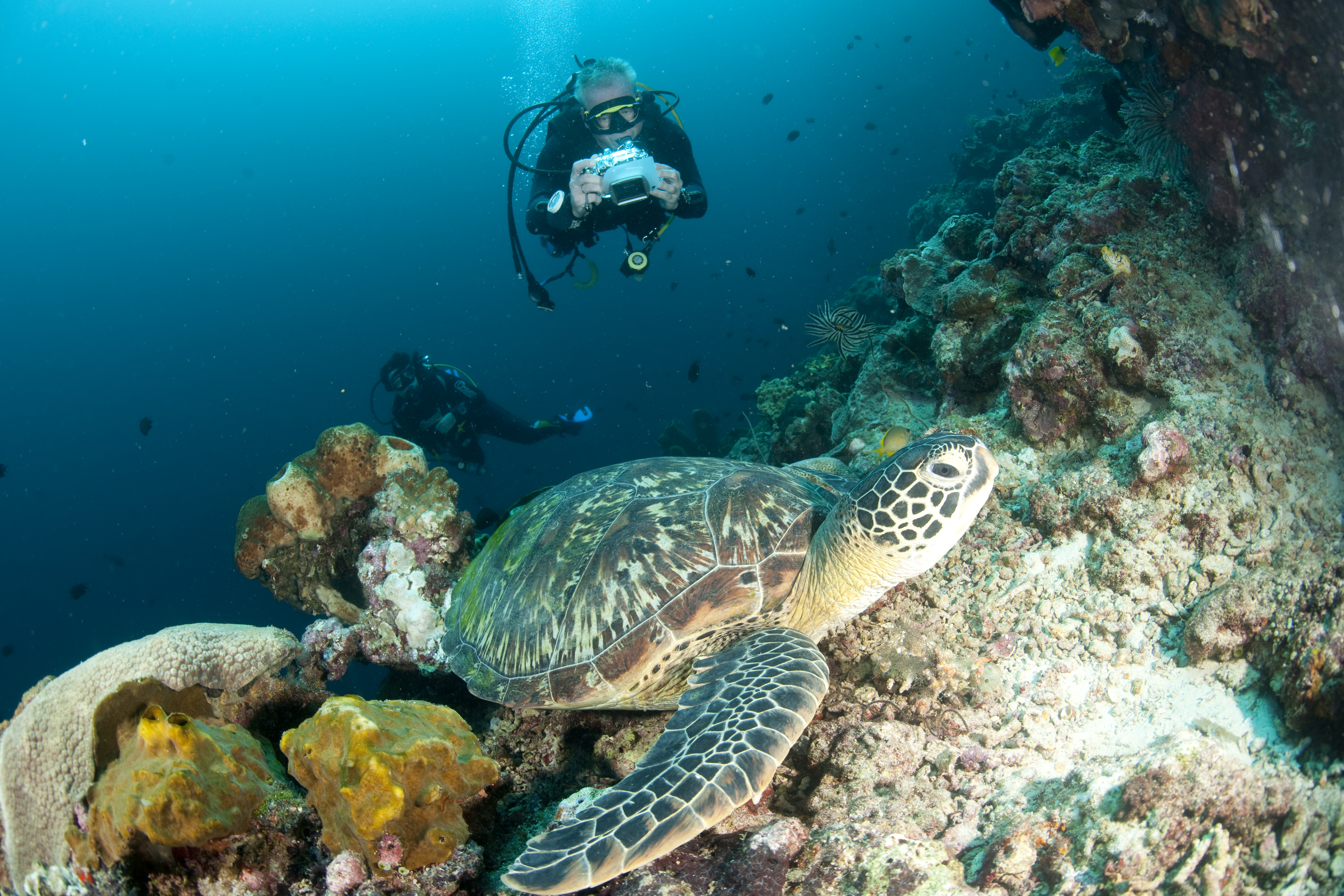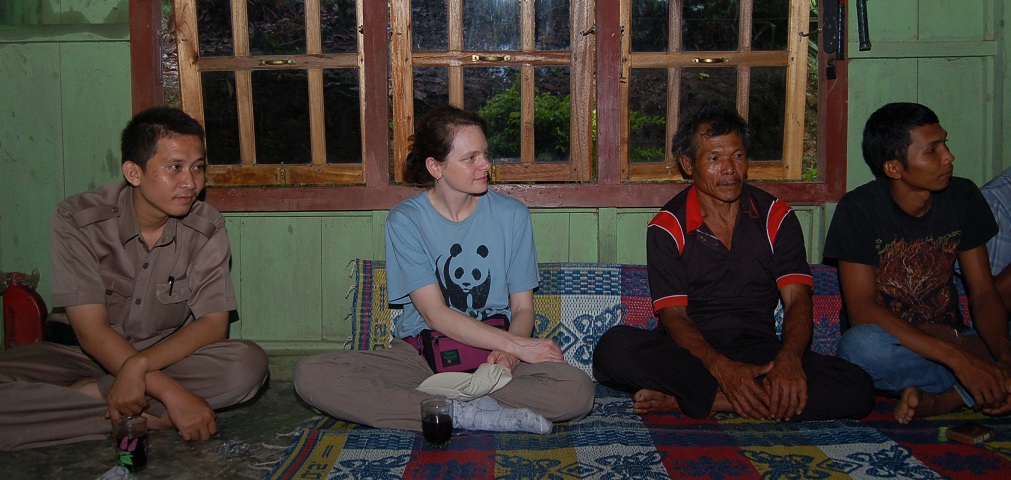Cassie O’Connor’s commitment to conservation deepened after college when she co-managed a forestry station in Indonesia. The pristine Indonesian environment and rich culture have since brought her back repeatedly and have inspired her in various conservation roles she’s played over the years.
At WWF, Cassie O’Connor works with foundations and with program staff to provide support to conservation projects throughout the world, with a particular focus on Indonesia and the Pacific. In February Cassie will be joining as guest lecturer on our Best of Indonesia Adventure Cruise. We asked her to give us a preview of what we’ll see on the trip and what WWF is doing in Indonesia.
1. What initially drew you to work in the Coral Triangle and Indonesia region?
After college, I had the opportunity to live in Gunung Palung National Park in West Kalimantan (Indonesian Borneo). I lived there for a year co-managing a forestry station. I’ve been going back ever since. It was one of the best opportunities of my life, to live in pristine, primary rain forest in Indonesia, which is disappearing so fast. It inspired my decision to work on conservation.
2. What do you appreciate when you travel to Indonesia?
Indonesia is a place dear to my heart. There is amazing marine and terrestrial biodiversity including tigers, orangutans, rhinos and marine turtles. It’s also a place with incredibly rich culture, spanning more than 17,000 islands! I love to practice my Indonesian when I’m traveling. It’s rewarding to connect with people there and to learn directly from residents about their work and lives.
3. How did you join WWF?
After living in Indonesia, I saw that basic science can only accomplish so much. I wanted to see how policy could aid conservation. I went back to school to get a law degree and I spent a few years working as a lawyer for an environmental justice nonprofit. Afterwards, I moved to DC and began to get involved in WWF’s work in Indonesia.
4. How does your field experience help in your current role?
Working as a senior development officer with Foundation Relations, it’s incredibly helpful to have worked with field teams and spent time in Indonesia. It helps me understand the challenges and opportunities on the ground. It helps me work with foundation staff members as we think about the best way to accomplish goals in Indonesia and other parts of the Coral Triangle.
5. Are you seeing the impact of WWF’s work on the local communities in Indonesia?
Everything WWF does in Indonesia involves working with and engaging local communities and making sure they’re invested in and benefiting from conservation. In Wakatobi National Park, for example, WWF works with community groups to co-manage the park. They work on developing ecotourism that supports the environment and biodiversity as well as local livelihoods. Local communities in Wakatobi are active participants in the national park and in managing the marine wildlife.
In East Nusa Tenggara, an island chain east of Bali, we’ve worked with fisherman to develop best practices for catching tuna, which helps them bring in better quality fish. Since the fisherman are getting better prices for the fish they catch, they are able to catch less fish.
In southern Sumatra, we are working with local communities to set up farmer cooperatives to grow sustainable coffee and become certified by Rainforest Alliance. We have worked with women’s groups to help them market the coffee and connect with buyers.
6. What is the #1 threat to marine biodiversity in Indonesia?
The No. 1 threat to marine biodiversity in Indonesia is probably overfishing, especially illegal, unreported and unregulated fishing. WWF is working with companies that trade and buy fish to improve supply chain management. We are working with fisheries in Indonesia to implement Fishery Improvement Projects and eventually achieve Marine Stewardship Council certification. We also work with the government to stop illegal fishing through better enforcement and patrolling.

Conservation in places like Bunaken National Park allows marine biodiversity to flourish. © Jurgen Freund/WWF-Canon
7. What should travelers look out for on a trip to Indonesia? What evidence of conservation work will we see?
Marine protected areas can have an amazing impact. When you’re diving or snorkeling in a marine protected area that has been managed well, you’ll see an amazing variety of colorful fish and corals. Outside of marine protected areas, you’re more likely see rubble that is not very colorful and fewer fish, especially larger fish. In these areas, travel with a responsible operator to leave as little of an environmental footprint as possible in and around the reef.
You might also see government patrol boats surveying the area in order to prevent illegal fishing and destructive fishing using bombs or cyanide. Destructive fishing is a big problem throughout eastern Indonesia. When you see coral that’s been destroyed, it’s often because fishermen have been blast fishing in the area. Because of our work with the government and community patrols, there has been a marked decrease in bomb fishing in the Solor-Alor region.
To help us continue to protect these pristine areas, be sure to wear reef-friendly sunscreen while swimming and be sure to not stand on coral or touch any creatures you see. Also, be aware of your own plastic use; it’s a huge problem globally for ocean health; no one wants to see trash floating in these species-rich waters.
8. How does travel to Indonesia help support conservation in the area?
Almost every project I’ve worked on in Indonesia has a tourism component. It’s an important aspect of sustainable finance for conservation. Most communities see it as a benefit they want to promote. Supporting ecotourism is important to make projects sustainable. There was a recent New York Times article highlighting a study in Palau showing that sharks in the ocean are worth $2 million, much more than sharks in soup. It shows the value of intact ecosystems and animals for tourism and communities. Sustainable tourism is an important part of our work.




























